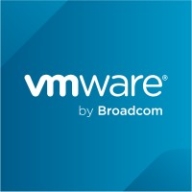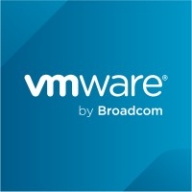

VMware Cloud Director and VMWare Tanzu CloudHealth compete in the cloud services category. VMware Cloud Director is preferred for its user-friendly features and scalability, while CloudHealth is highlighted for its cost-saving functionalities.
Features: VMware Cloud Director offers scalability, integration with vSphere, NSX, vROps, and a self-service portal for resource management. VMWare Tanzu CloudHealth provides detailed cost management, optimization across multi-cloud environments, and insightful analytics.
Room for Improvement: VMware Cloud Director needs better public cloud integration, improved automation, and a simplified installation process. VMWare Tanzu CloudHealth requires enhanced SaaS application visibility, more accurate data, and improved technical support.
Ease of Deployment and Customer Service: VMware Cloud Director's flexibility across clouds is overshadowed by its complex setup, while VMWare Tanzu CloudHealth offers straightforward deployment and strong customer support. Both solutions receive commendations for customer service.
Pricing and ROI: VMware Cloud Director is costly but valued for its features, facing concerns about licensing costs. VMWare Tanzu CloudHealth offers competitive subscription pricing, easing budget management and delivering significant cost savings.
| Product | Market Share (%) |
|---|---|
| VMware Cloud Director | 5.4% |
| VMWare Tanzu CloudHealth | 1.9% |
| Other | 92.7% |


| Company Size | Count |
|---|---|
| Small Business | 24 |
| Midsize Enterprise | 11 |
| Large Enterprise | 36 |
| Company Size | Count |
|---|---|
| Small Business | 4 |
| Midsize Enterprise | 2 |
| Large Enterprise | 4 |
VMware Cloud Director, also known as vCloud Director, is a cloud management tool that offers secure, flexible, and efficient cloud resources to thousands of enterprises and IT teams across the world. The solution serves as one of the leading cloud service-delivery platforms for businesses that want to manage and operate their services effectively. By deploying this solution, companies can benefit from virtualized networking, computing, security, and storage. These benefits can be received in a timely manner, as the infrastructure of the product is operationally ready within minutes and clients do not need to install and configure physical infrastructure.
One of the biggest advantages of vCloud Director is that it allows users to build cloud-ready applications. In several ways, it facilitates the process for developers, including:
vCloud Director Features
This VMware product has various features through which users can virtualize their data and benefit from quality management solutions. Among the popular capabilities of vCloud Director are:
vCloud Director Benefits
VMware vCloud Director offers various benefits to its users. Some of these include:
Reviews from Real Users
Ajit Y., a cloud architect at a computer software company, likes VMware vCloud Director because it is a stable, truly multitenant software and the go-to tool for infrastructure as a service.
Kashif F., a divisional engineer at National Telecom Corporatio, rates vCloud Director highly because the product can be used for infrastructure provisioning without using a platform service.
VMware Tanzu CloudHealth, formerly known as VMware Aria Cost Powered by CloudHealth, is a specialized cloud management platform tailored for Multi-Cloud Cost Optimization. It offers comprehensive visibility into cloud spending across various providers, enabling users to identify areas for optimization and make informed resource allocation decisions. With features like reserved instance management, resource rightsizing, and automated cost governance policies, it facilitates financial management for optimal cost efficiency. Beyond cost optimization, Tanzu CloudHealth enhances cloud operations through workload optimization and governance automation, catering to multi-cloud environments encompassing public, private, and hybrid clouds. Its primary focus remains on enabling organizations to effectively manage and reduce cloud expenditures while supporting operations across diverse cloud platforms.
We monitor all Cloud Management reviews to prevent fraudulent reviews and keep review quality high. We do not post reviews by company employees or direct competitors. We validate each review for authenticity via cross-reference with LinkedIn, and personal follow-up with the reviewer when necessary.